 Iran’s Attack on Israel
Iran’s Attack on Israel


6 min read
Take a short stroll through Jewish art history.
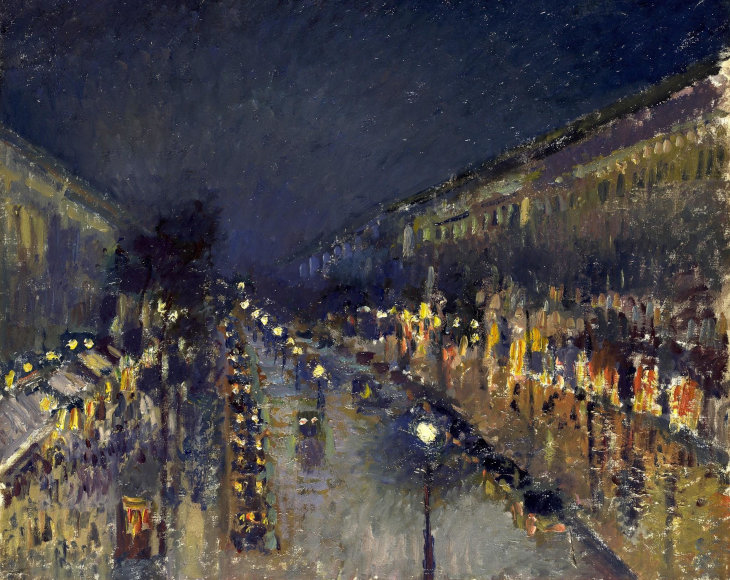 The Boulevard Montmartre at Night, (1897)
The Boulevard Montmartre at Night, (1897)
Impressionism is a personal favorite of mine. I love the way the strokes up close look a mess but from afar come together into a beautiful painting. The word Impressionism was coined by Louis LeRoy in his critique of Claude Monet’s Impression Sunrise. He defined the word as an impression on the scene in front of them, in other words the first draft. Edouard Manet’s A Bar at the Folies Bergere, and Paul Cezanne’s Pyramid of Skulls, may come to mind as well. However, one Jewish Impressionist hid amongst the midst of the greats: Camille Pissarro.
Jacob Abraham Camile Pissarro was a Spanish and Portuguese Jew born on July 10th, 1830 on the Island of St. Thomas in the Danish West Indies. His grandfather left Bordeaux, France to the island where Pissarro was raised, however his parents sent him to France for his education. While there he showed an affinity for drawing and frequented the Louvre. Upon his return the pressure of working for the family business was placed upon him.
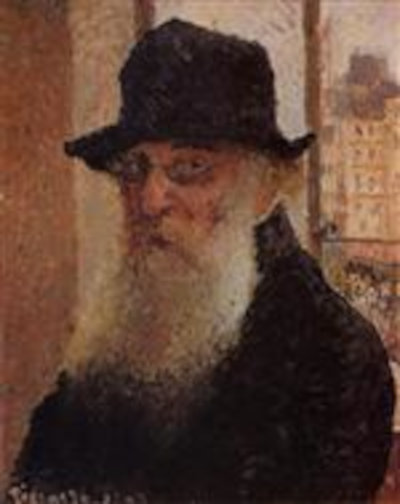 Pissarro’s Self Portrait
Pissarro’s Self Portrait
During his early career, Pissarro returned to France where he studied under the influence of Camile Corot and eventually met the budding impressionists mentioned above, becoming part of the Impressionist group. But he always felt like an “intruder in the group”.
The group of artists were on the verge of breaking up, and the Dreyfus Affair exasperated the tensions. Throughout the trial, Pissarro received many antisemitic comments from Pierre Auguste Renoir's younger brother. Pissaro wrote to his dear friend Monet with his concern about the comments that the man was accusing him of being “a prime schemer without talent, a mercenary Jew, playing underhanded tricks”. He also reached out and encouraged Bernard Lazare, who stood up to the widespread antisemitism and thought Dreyfus was innocent.
After expressing his support for Dreyfus and the belief in his innocence, Pissarro lost many of his friends. They refused to even greet him. He died on November 13th 1903 in France and none of his friends attended his funeral.
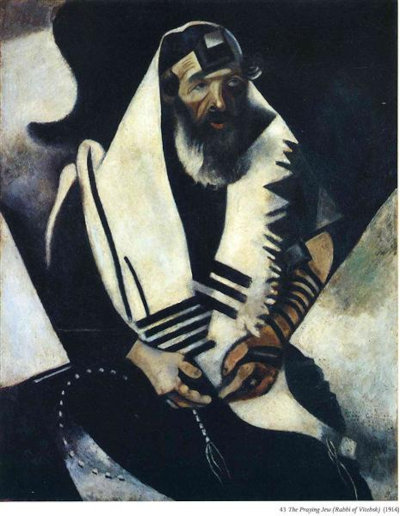 The Praying Jew (Rabbi of Vitebsk), 1914
The Praying Jew (Rabbi of Vitebsk), 1914
Expressionism is a technique where the artist focuses on the expression of subjective emotions in their paintings. Isn’t all art a form of expression of emotions? What makes Expressionism unique? The Encyclopedia Britannica answers: “through the distortion, exaggeration, primitivism and fantasy through the vivid, jarring, violent, or dynamic application of formal elements”. In other words, the painter is expressing a subjective personal experience through his painting.
A well-known Jewish Expressionist is the Belorussian painter, Marc Chagall. Born on July 7th, 1887, the artist was born into a Hasidic family and went to Cheder in his youth. He went to Russian secular school as well, where he began to draw.
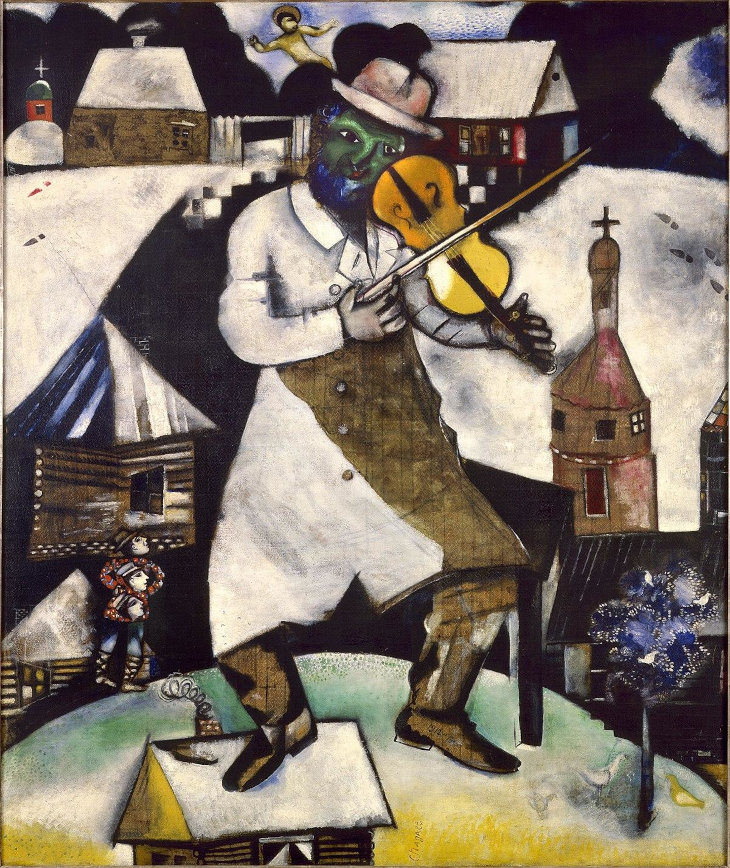 Chagall’s The Fiddler
Chagall’s The Fiddler
In 1910 the artist moved to Paris where he lived the bohemian artist lifestyle. In Paris Chagall produced some of his most famous paintings and his subject matter was the Jewish life in the Shtetl, the most famous being The Fiddler, 1913. The Nazis despised his works and displayed his art in the “Degenerate Art” exhibition that was held in Munich in 1937. The artist and his family fled to New York, and eventually moved back to France in 1948.
In 1961 Chagall debuted his series of 12 biblically inspired stained-glass windows, each one depicting one of the 12 Tribes of Israel. There were first on display at The Louvre in Paris and then at the Museum of Modern Art in Manhattan in 1961, and in 1962 they found their permanent home at the Hadassah Hospital in Jerusalem.
Chagall said, “This is my modest gift to the Jewish people who have always dreamt of biblical love, friendship and peace among all peoples.”
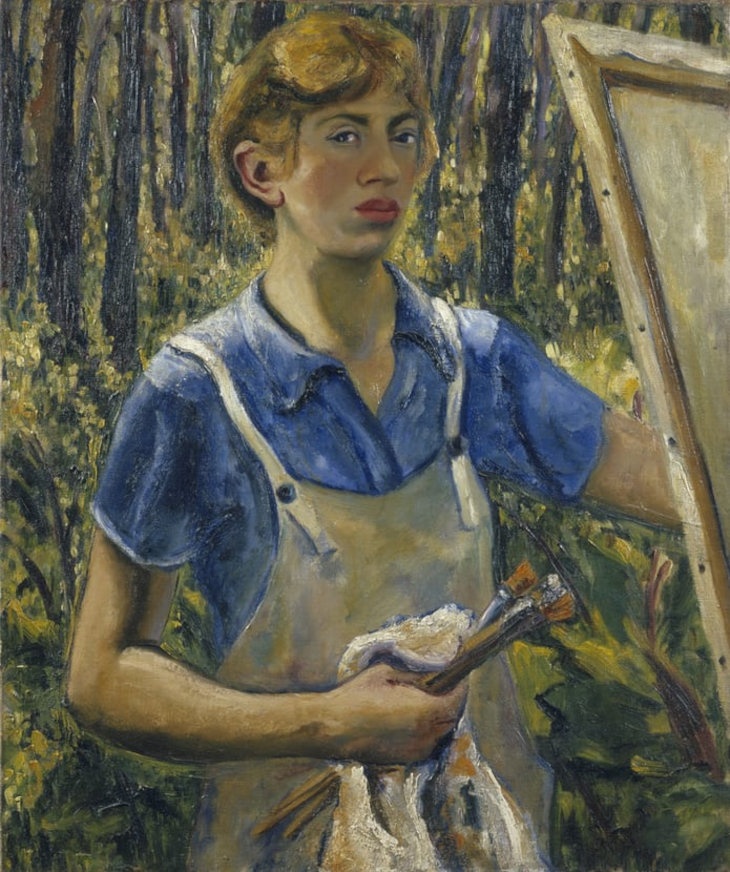 Lee Kasner, Self Portrait, 1930
Lee Kasner, Self Portrait, 1930
Born on October 27th, 1908, to a Russian Jewish family in Brooklyn, New York, Lee Krasner’s mother was shocked by the secularism in America and reinforced the Jewish faith in her home. Krasner was accepted to Washington Irving High school, the only program that allowed women to do art. She was inspired by the German Abstract painter Hans Hofman. While working with Hofman, her mentor, she started to gain recognition as a gifted painter. Although she married Jackson Pollock, she still identified as a Jew, despite her estrangement from Judaism.
 The Steerage, 1913 (Wikipedia)
The Steerage, 1913 (Wikipedia)
Born on January 1st, 1864, Alfred Stieglitz was born in Hoboken, New Jersey, to a prominent German Jewish family. In 1881, his father moved the family to Berlin so that his children would get a German education. Before becoming a photographer, Stieglitz studied engineering. When he found his passion in photography he switched majors. He advocated that photography was real art and that “like a paintbrush, a camera could be used as a tool to create a manmade piece of art.”
He later married Georgia O’Keefe, another famous artist, and did an acclaimed series of photographs of her, described by the Encyclopedia Britannica as “...300 individual pictures and remains unique and compelling in its ability to capture the many facets of a single subject.”
 Shevout (Pentecost) (Das Wochen- Order Pfingst- Fest), 1880 (Jewish Museum)
Shevout (Pentecost) (Das Wochen- Order Pfingst- Fest), 1880 (Jewish Museum)
Daniel Moritz Oppenheim, was a German Jew from Hanau born on January 7th, 1800. He was raised in an Orthodox home and became known as the first Jewish painter of the modern era as well as the first Jew to be accepted into the non-Jewish German Society. Oppenheim’s career started in German in the Munich Academy of Arts, he then moved to Paris where he taught under an artist named Regnault. Later on he traveled to Rome where he studied the life of the Jews domestic and religious life, and even did some sketches to later paint back in Germany.
A proud Jew, the artist tried to preserve the beauty of Jewish life in his paintings to appeal to his non-Jewish audience. He painted Jews surrounded by books, and even depicted the Ghettos as a warm and comfortable sanctuary.
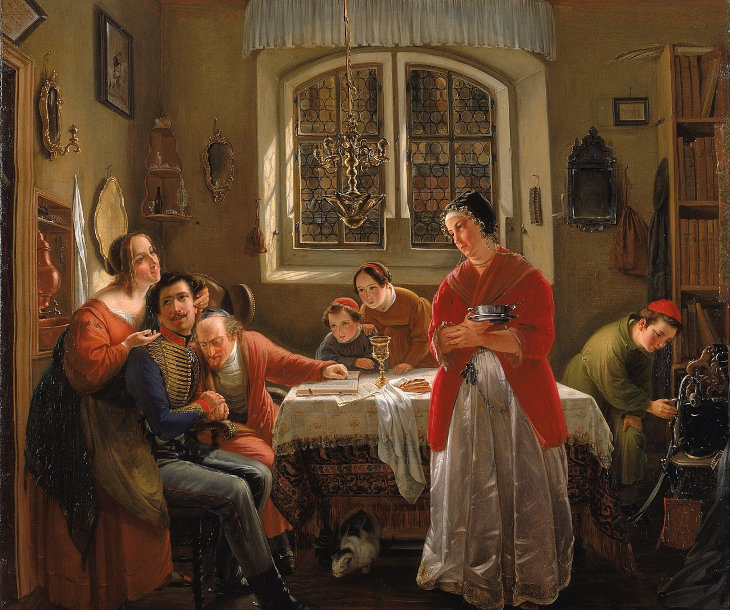 The Return of the Jewish Volunteer from the Wars of Liberation to His Family Still Living According to Old Customs (1833–34)
The Return of the Jewish Volunteer from the Wars of Liberation to His Family Still Living According to Old Customs (1833–34)
